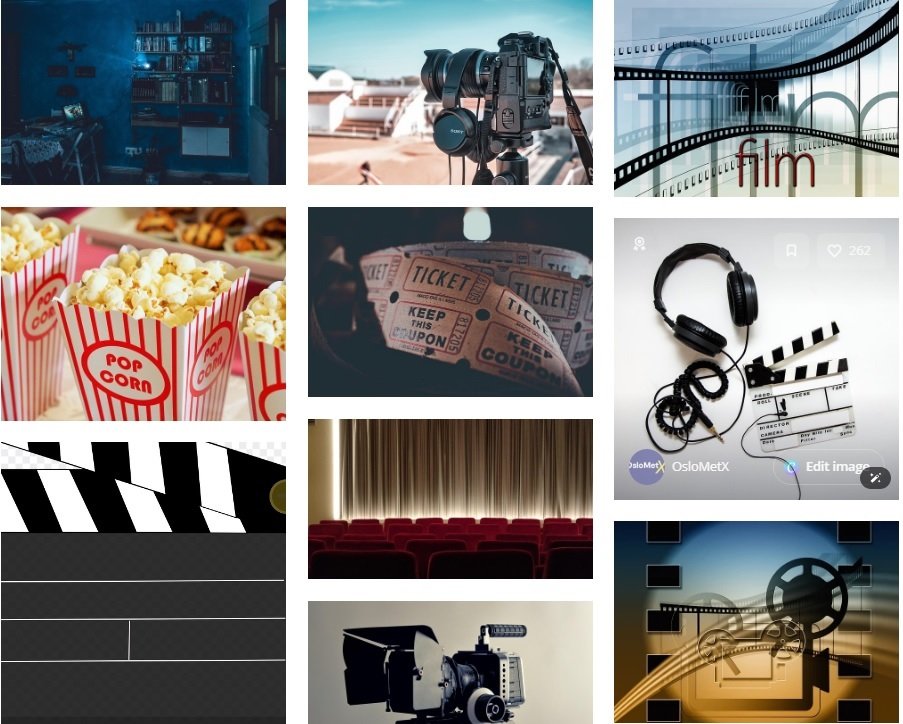The Evolution of Cinema
Impact of Cinema: The history of cinema dates back to the late 19th century, marking the beginning of a transformative journey that would shape cultural and societal narratives. The initial films, often mere moving pictures, were generally short and silent, providing simple entertainment for the masses. However, the technological advancements throughout the years ushered in pivotal changes that enhanced storytelling in profound ways.
A significant milestone in film history occurred with the introduction of synchronized sound in the late 1920s. This breakthrough not only enriched the audience’s experience but also revolutionized the way stories were told on screen. “Talkies,” as they were called, allowed for the integration of dialogue, music, and sound effects, paving the way for more dynamic narratives that resonated with viewers. Subsequently, color technology emerged, enhancing visual storytelling and drawing larger audiences into theaters. The vibrant hues added layers of emotional depth, enabling filmmakers to express complex themes and create memorable atmospheres.
As the era of blockbusters began in the 1970s, cinema experienced yet another evolution with the rise of digital effects. The advancement in technology allowed for breathtaking visuals and creative possibilities previously limited by practical effects. This digital revolution not only altered the aesthetic appeal of films but also contributed to the globalization of cinema, leading to a wider reach and diverse storytelling styles. Furthermore, the advent of various genres, from horror to science fiction, mirrored societal changes and cultural movements, showcasing the interaction between film and the zeitgeist of different eras.
Today, cinema stands at an intersection of tradition and innovation, continuously evolving as filmmakers explore new techniques and mediums. Whether through streaming platforms or virtual reality experiences, the essence of storytelling remains vital, affirming cinema’s status as a powerful force in culture and society. As we observe the ongoing evolution of film, it is evident that the journey of cinema is not merely a reflection of technology, but a representation of the human experience itself.
The Art of Storytelling in Film
Movies have long been recognized as an influential medium for storytelling, engaging audiences with narratives that resonate emotionally and culturally. At the heart of compelling cinema lies character development, plot structure, and visual symbolism, which together create an immersive experience that reflects the human condition. Effective character development is essential, as it allows viewers to connect with the protagonists and antagonists on an emotional level. Filmmakers carefully craft characters through their backstories, motivations, and transformations, inviting the audience into their journeys and struggles.
Impact of Cinema: The plot structure plays a pivotal role in shaping the narrative arc of a film. By employing techniques such as exposition, rising action, climax, and resolution, filmmakers build tension and interest that captivate viewers. The use of subplots often enriches the main narrative, providing additional layers of meaning and complexity. Moreover, visual symbolism enhances storytelling, where images, colors, and settings convey deeper messages that words sometimes cannot express. Through these visual cues, films can address themes such as love, loss, and societal challenges, prompting reflection and discussion among audiences.
The emotional impact of cinema films cannot be overstated. Movies have the capacity to evoke a spectrum of feelings, from joy to sorrow, which resonates with audiences on both personal and collective levels. This emotional engagement often fosters empathy, allowing viewers to see the world from different perspectives and encouraging them to reflect on their own experiences. As a powerful conduit for storytelling, cinema can transcend geographical and temporal boundaries, uniting people through shared narratives and diverse cultural expressions. Ultimately, the art of storytelling in film is not merely about entertainment; it serves as a mirror to society, shedding light on the complexities of human existence while inspiring dialogue and change.
Impact of Cinema: Movies as a Reflection of Society
Films serve as a powerful reflection of societal values, issues, and transformations, capturing the essence of cultural moments and collective sentiments. Through the years, the evolution of cinema has provided viewers with a lens through which they can examine their own realities. By showcasing various narratives, films offer insights into the complexities of different social dynamics, allowing audiences to engage in meaningful conversations about their world.
Representation in film plays a pivotal role in shaping societal perceptions. Diverse casting and storytelling can provide visibility to underrepresented groups, fostering empathy and understanding among viewers. For instance, films like “Black Panther” and “Moonlight” have not only broken box office records but have also sparked essential dialogues regarding race, identity, and the importance of cultural narratives. These cinematic experiences challenge audiences to confront their biases and broaden their perspectives, prompting a re-evaluation of societal norms.
Moreover, cinema acts as a catalyst for discussions on pressing social justice themes. Documentaries such as “13th” and narratives like “The Pursuit of Happyness” highlight systemic inequalities that often go unnoticed. Such films have the potential to inform public opinion, driving awareness and inspiring individuals to advocate for change. By engaging with these stories, audiences are encouraged to reflect on their own roles within societal contexts and the ways in which they can contribute to positive transformation.
Beyond representation, films also capture the zeitgeist of specific eras, mirroring the concerns and aspirations of society at large. The evolution from silent films to modern blockbusters illustrates profound shifts in technology, artistry, and audience expectations. As cultural barometers, movies encapsulate the spirit of their times, making them invaluable tools for understanding the ongoing dialogue between cinema and societal evolution.
The Future Impact of Cinema in the Digital Age
The landscape of cinema is experiencing a profound transformation as it adapts to the dynamics of the digital age. One of the most significant phenomena is the rise of streaming services, which have revolutionized how audiences consume films. Platforms such as Netflix, Amazon Prime Video, and Disney+ have not only altered distribution models but also expanded access to a diverse array of content, allowing viewers to explore genres and filmmakers from around the globe. This shift has democratized cinema, empowering smaller films and independent creators who may not have the resources to compete with traditional studio releases.
Moreover, social media has emerged as a powerful tool for film promotion, influencing audience engagement and expectations. Cinematic campaigns now leverage platforms like Twitter, Instagram, and TikTok to create buzz and foster connections with fans. This interactivity not only enhances marketing efforts but also cultivates a community around films and filmmakers, encouraging discourse and critical engagement. As audiences become more active participants in the promotional process, their preferences shape the types of stories being told and how they are presented.
The advent of virtual and augmented reality is opening up an entirely new frontier for storytelling. These technologies provide immersive experiences that challenge traditional cinematic boundaries, allowing audiences to engage with narratives in interactive ways. The potential for VR and AR to deepen emotional resonance and create a sense of presence is prompting filmmakers to rethink how they craft narratives, pushing the envelope of creativity and innovation in cinema.
Despite these advancements, challenges remain. Issues such as screen fragmentation, competition among content providers, and the need for equitable representation in storytelling are prominent concerns for creators and audiences alike. However, these obstacles also present opportunities for more inclusive and diverse narratives to flourish. As the film industry navigates this evolving landscape, it is positioned to not only adapt but also thrive in ways that resonate with contemporary society.















